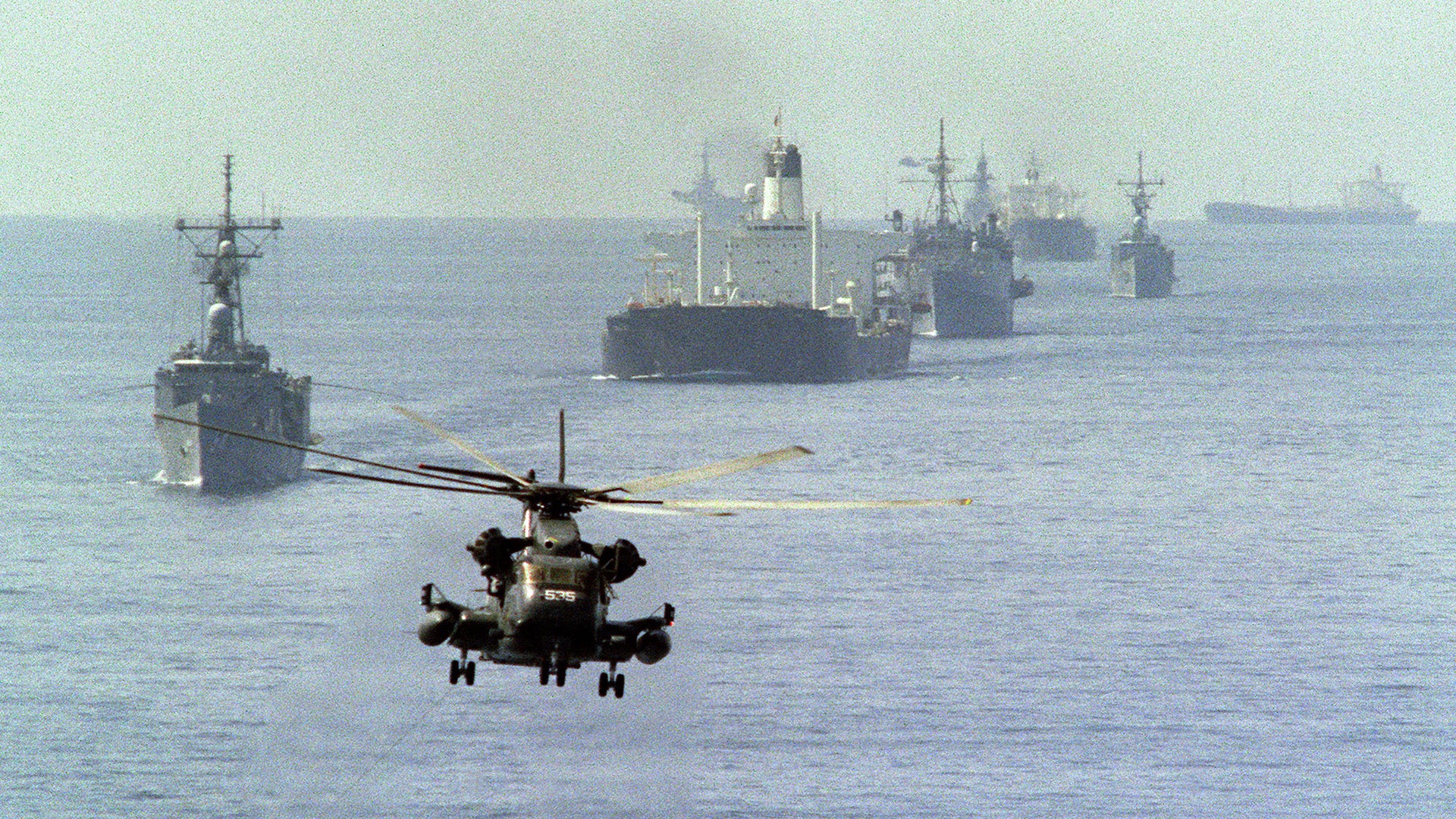Recently, Jeremy Hunt, the Foreign Secretary of the United Kingdom, proposed a “European led maritime protection mission” in response to Iranian aggression in the Persian Gulf. If you are wondering what a European led maritime protection mission looks like, you are not alone. I have talked to a dozen or so naval strategists over the last few days, and nobody is quite sure what he is talking about. The feedback I got was clear on two points, however.
First, the Royal Navy (RN), while qualitatively one of the best navies in the world, does not have the force structure required to provide constant security and coverage to all British flagged commercial ships operating in the Persian Gulf on an enduring basis. Yes, the Royal Navy might escort and protect a single ship or two through the Strait of Hormuz, but protecting all British flagged commercial ships over the long term is another case entirely.
Second, beyond the short term protection that the RN is able to provide, whatever this larger protection mission winds up being, it may not end up looking like a traditional convoy system. Why? Because every relevant stakeholder in this drama hates convoys.
Tankers Are The Perfect Target
While commercial ships come in all shapes and sizes, tankers carrying crude oil and refined petrochemical products have some characteristics in common. They have vast holding tanks, which increases economies of scale. They are highly automated and minimally manned, which decreases operating costs. These design parameters result in commercial tankers being large, slow, difficult to maneuver, and easy to detect both visually and by radar, which makes them extremely easy for malign actors to target or seize.
This is not a new development. Because of their economic value during peacetime and their industrial utility during wartime, commercial ships, especially oil and petrochemical tankers, have always been high-value targets.
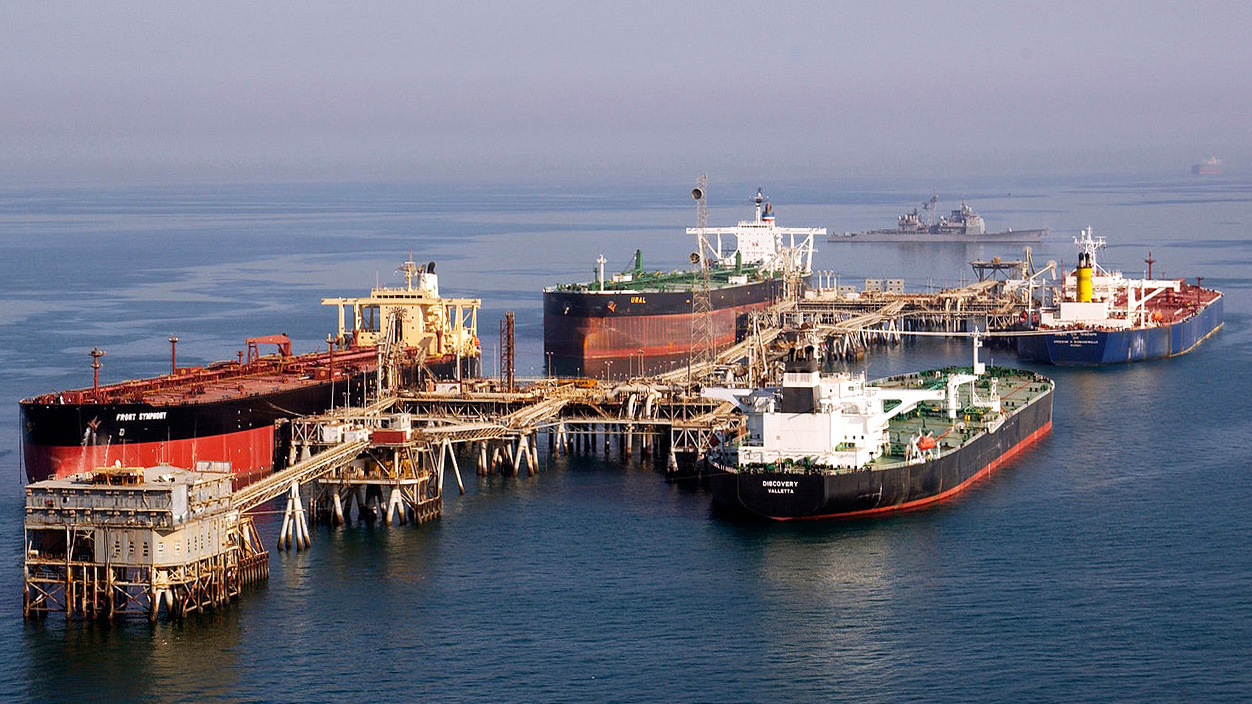
Iran Attacks and Seizes Tankers
Over the past several months, the Islamic Republic of Iran has conducted a number of destabilizing attacks against maritime commercial shipping in the Middle East. These attacks have ranged from kinetic operations, including an alleged attempt to sink or severely damage two petrochemical tankers, to harassment of shipping engaged in navigation through the Strait of Hormuz (SOH), to the outright seizure of the Stena Impero, a British flagged crude oil tanker.
The geographical dispersion of these and previous Iranian operations ranges from the Persian Gulf through the Strait of Hormuz and into the Gulf of Oman, and as far as the Gulf of Aden, the Strait of Bab El Mandeb and the Red Sea. This shows the reach of the Islamic Republic of Iran Navy (IRIN), the Islamic Revolutionary Guards Corps Navy (IRGCN), and the IRGC’s Quds Force, which trains shore-based proxies of Iran, including the Houthi rebels of Yemen.
It’s All About The Benjamins
There are a lot of plausible reasons behind Iran’s provocative and destabilizing behavior, but the most obvious cause is the Iranian regime’s dire financial situation. While the United States has always had some form of sanctions imposed against Iran since the revolution of 1979, it’s fair to say that the current program of “maximum pressure” sanctions is more comprehensive and uniformly enforced than at any point during the last 40 years.
The sanctions are imposing a severe cost on the Iranian economy, as formally declared oil exports have shrunk to less than 500,000 barrels per day (BPD). As recently as October of 2016, Iran was exporting over 3,000,000 BPD. To be clear, this is not just a U.S. program of sanctions. The European Union (EU) has its own set of sanctions that have impacted Iran, including in indirect ways. Enforcing sanctions on Syria, a major Iranian ally, was the primary cause of the U.K. seizing the Iranian oil tanker Grace 1.
As a result of the decrease in oil exports, the Iranian regime has experienced a massive reduction in revenue. Iran is in desperate need of increased cash flow, both for legitimate domestic expenditures for basic governmental functions inside Iran and to support its illegitimate international operations, including propping up the Assad regime in Syria, subsidizing Hezbollah in Lebanon, supplying surface to surface rockets to Hamas in Gaza, and its support for Houthi rebels in Yemen. Of particular concern in the context of maritime security is the fact that Iran is supplying cruise missiles and explosive-laden remote-controlled boats to Houthi rebels in Yemen. The Houthis have been particularly active. Not content with targeting just commercial shipping, they have also targeted Saudi naval vessels, Emirati supply ships, and even U.S. Navy warships.
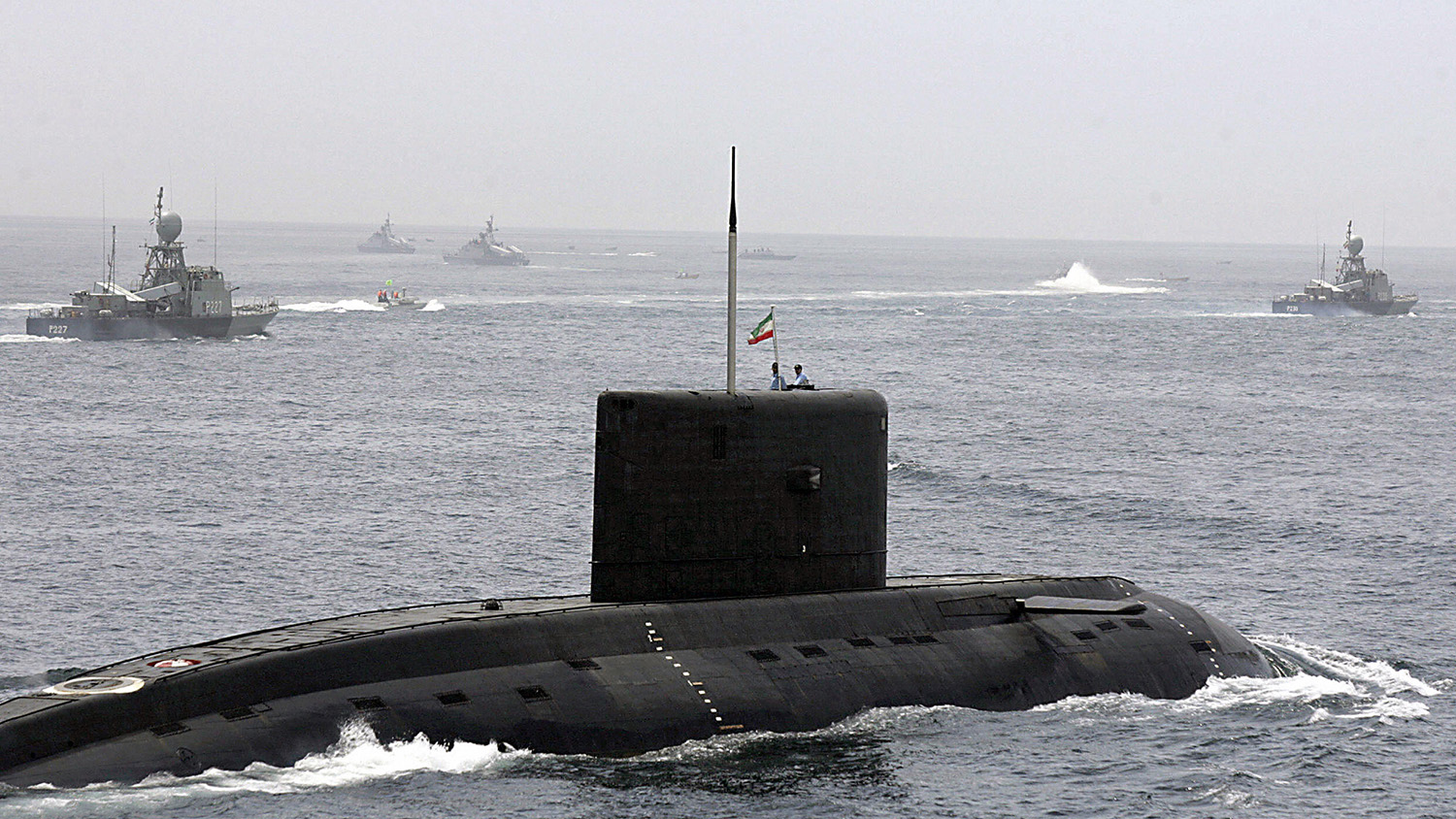
Iran’s Objectives
By destabilizing the security situation for commercial shipping in the Persian Gulf, Iran hopes to achieve two separate, but related outcomes. First, in the near term, Iran hopes to see an increase in the price of oil. Second, over the long run, Iran hopes to demonstrate that it is the dominant regional power in the Middle East and use that status as negotiating leverage in order to reduce sanctions.
In this scenario, Iran would offer to guarantee the security of commercial shipping in the Persian Gulf and the Strait of Hormuz in return for reduced sanctions. While the first outcome, an increase in oil prices, is plausible and perhaps even likely, the second outcome, relief of sanctions, looks increasingly unrealistic. The U.S. is committed to the maximum pressure approach and will be for the foreseeable future. By seizing a British flagged tanker, Iran has made a rapprochement with the European Union (EU) much less likely, as well.
Convoys Are The Perfect Technical Solution
At the beginning of this article, we talked about why oil and petrochemical tankers are easy targets, they are large, slow, difficult to maneuver, easy to detect and worth a lot of money. Iran has targeted tankers for attacks, harassment, and seizure. There is no reason to suspect this behavior will stop anytime soon. Fortunately, there is a tried and true solution that has proven throughout history to be very effective.
Convoys of merchant vessels, guarded by relatively few military ships, have been used for the better part of a thousand years to offer protection. Convoys were used extensively by the Royal Navy to great effect during the Napoleonic Wars. During World War I, less than 1% of merchant vessels that sailed across the Atlantic as part of the American and British convoys were lost to German submarine attacks. While the German surface raiders and U-boats of World War II were significantly more capable than their predecessors, the convoy system operated by Allied fleets resulted in the successful delivery of hundreds of millions of tons of cargo to Great Britain and the Soviet Union.
From a supply and logistics perspective, it is beyond dispute that the strategic bombing campaign against Nazi Germany, the Russian offensive on the Eastern Front, and the landings in North Africa, Italy, and at Normandy would have been categorically impossible without the convoy system delivering the food, raw materials, and finished products required for these operations. Convoys were the essential logistical element of victory over Nazi Germany in World War II.
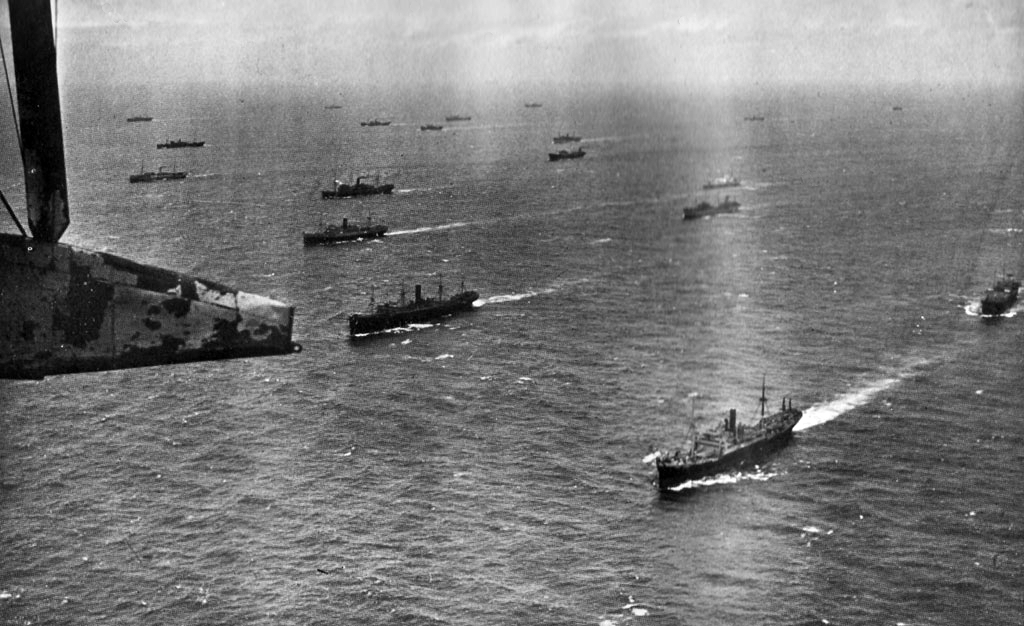
Operation Earnest Will
Convoys are not merely a relic of wars past. A major component of the Iran-Iraq War of the 1980s was the so-called “Tanker War” that resulted in over 450 commercial ships being hit. Iran targeted ships owned, flagged, or operated by Kuwait and Saudi Arabia in retaliation for their financial support to Iraq. In response, the U.S. Navy initiated Operation Earnest Will in 1987, the largest convoy operation since World War II.
During this operation, Kuwaiti and Saudi vessels were “reflagged” to U.S. merchant status, and the U.S. Navy began escorting convoys out of the northern and central Persian Gulf ports through the Strait of Hormuz. Once far enough outside the Persian Gulf to be protected from Iranian attacks, the convoys would disband, and inbound empty tankers would form up into a convoy to go back through the Strait into the Persian Gulf.
Operation Earnest Will lasted from July 1987 to September 1988 and was a major factor in forcing Iran to accept a negotiated end to the Iran-Iraq War.
From a technical perspective, convoys are an obvious “off the shelf” solution to the current problem that could be implemented in very short order.
Why Hasn’t The Convoy Solution Been Invoked?
At this point, you might be wondering why the convoy solution hasn’t already been embraced. Given that the Iranian threat to commercial shipping is realistic and enduring and given that the convoy system is a tried and true solution to the problem, what is keeping the U.S. Navy and its allies in the Persian Gulf from offering convoys up to commercial shipping? Why haven’t the commercial shipping lines requested or even demanded this solution be promulgated as soon as possible?
To be clear, the United Kingdom is proposing a European-centric “maritime protection mission” in response to the seizure of Stena Impero. The exact nature of this nascent maritime protection mission might wind up looking very similar to a convoy system, but then again, it might not. While convoys are proven concept, unless they are in response to a shooting war, both navies and commercial shipping companies really dislike using them.
For a recent example of this, we can look to the problem of Somali piracy and how, despite an enduring threat that lasted about a decade and resulted in hundreds of attacks, both navies and commercial shipping companies resisted adopting convoys.
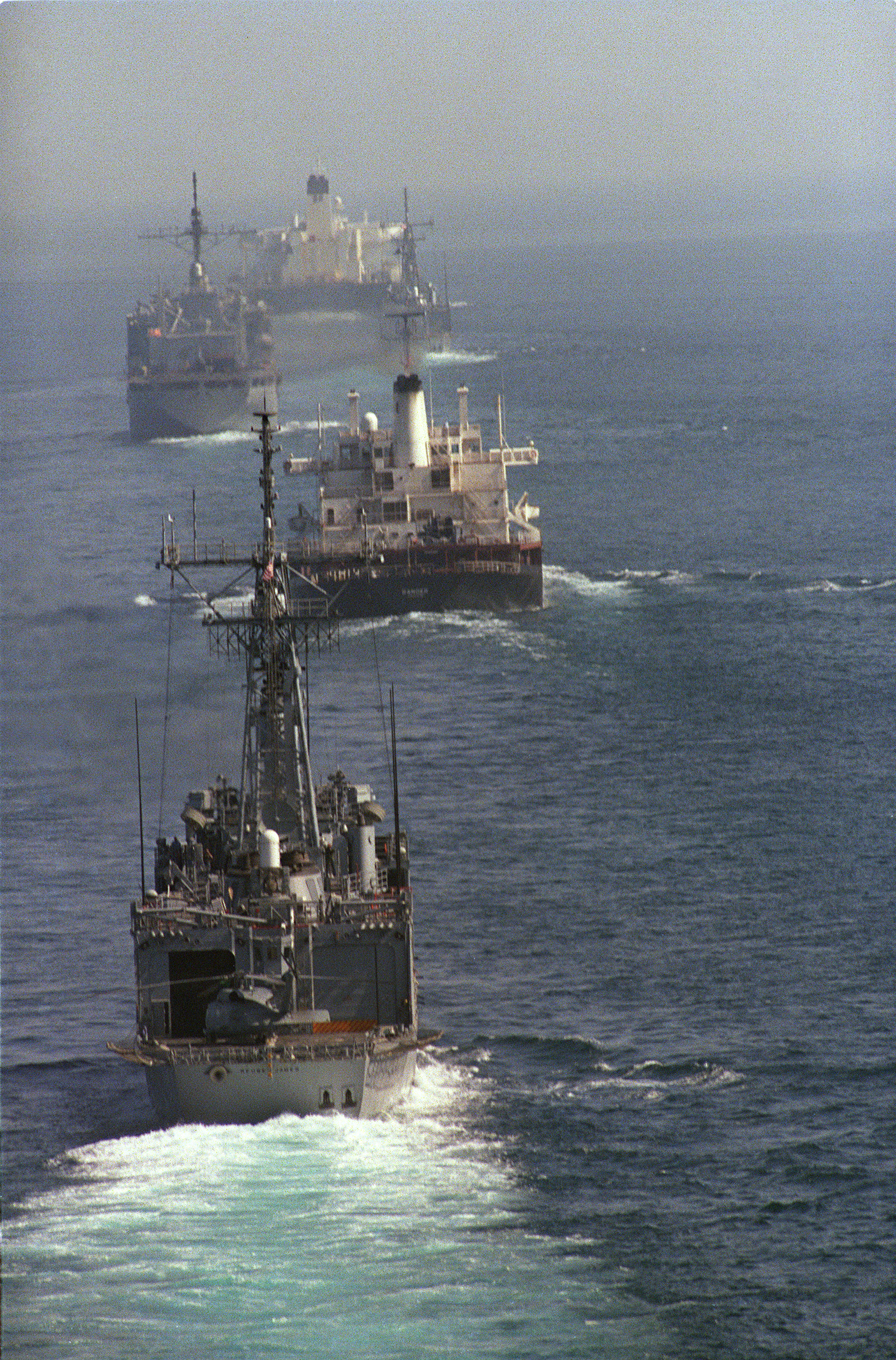
Convoys And Somali Piracy
Pirates operating from the African continent are hardly a new problem. In fact, the first major foreign war fought by the United States following independence from Great Britain was the First Barbary War from 1801 to 1805 in response to pirates from the Barbary States of Tripoli, Tunis, Algiers, and Morocco preying on American commercial shipping in the Mediterranean. Almost exactly 200 years after defeating the Barbary pirates, the U.S. Navy was again confronted with the problem of piracy, this time originating from the failed state of Somalia.
Starting in 2005, Somali pirates conducted hundreds of attacks against commercial ships in the Gulf of Aden and Somali Sea, later extending the attack zone out in the Arabian Sea and the Indian Ocean. The economic impact was significant. Direct payments to the pirates between 2005 and 2012 totaled just under $400 million. Indirect costs were much higher, with estimates approaching $20 billion per year. Insurance rates for commercial ships skyrocketed. Shipping companies incurred significant fuel costs by routing ships further and further around the attack zones. Along with the fuel cost of rerouting ships, cargo brokers suffered from the increased time required to transit around the piracy zones.
Yet even after a U.S. flagged ship, the MV Maersk Alabama, was seized by Somali pirates, both commercial shippers and the U.S. and allied navies resisted adopting a convoy system to prevent attacks. There was no technical reason to avoid convoys, but there were financial and operations reasons to reject the convoy option.
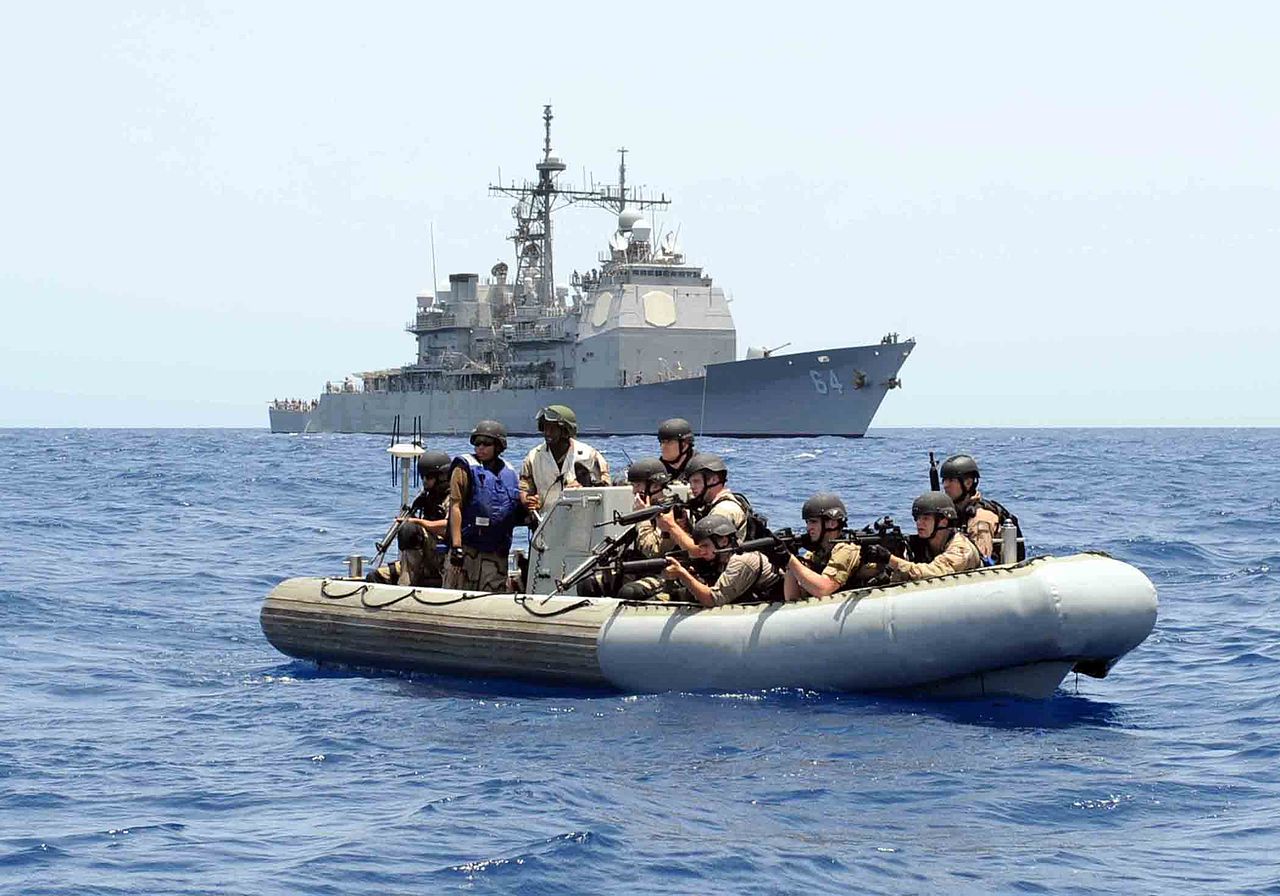
Shipping Companies Hate The Cost Of Convoys
The modern shipping industry is extremely competitive and efficient. One of the ways that modern shipping norms are more efficient than in years past is the quick turnaround time typically experienced in modern ports. Shipowners want the ships to pull into port, discharge cargo, load cargo, and get underway again as soon as possible. A ship and crew pushing cargo from port-to-port is generating revenue. A ship sitting in port is only generating costs.
Under normal transit procedures, as soon as an oil tanker loads up, at, say, the Saudi port of Ras Tanura in the Persian Gulf, it can immediately depart for its offload port. If that tanker has to wait to sail until a convoy forms up, that delay imposes an immense cost on the shipowner. Ships are like any major capital investment, most of them are purchased with a combination of equity investment and debt financing. Equity investors expect a return on their investment, and debt financiers expect their interest payments to be made on time. Ships sitting around empty—or worse, ships that are full of a cargo that has been purchased, but now sits idly, getting no closer to the destination and paying customers—generate a lot of costs, but no revenue.
Ultimately, shipowners, operators, investors in shipping companies, and debt financiers despise the idea of waiting around for convoys to form up. Their view is, a convoy might prevent an attack by Somali pirates or Iranian terrorists, but it absolutely will impose additional significant costs.
Modern Navies Hate Convoys More Than Shipping Companies Do
The term asymmetric warfare has been overused to the point of exhaustion, but the case of a modern navy operating a convoy system in order to protect commercial ships from a ragtag collection of pirates running around in fishing boats with rusty AK-47s and second-hand Rocket Propelled Grenades (RPG) is about as clear an example of asymmetric conflict as one could imagine. This is true both for the equipment that would be used as well as for the missions that would be curtailed in order to resource a convoy system.
In terms of equipment, the U.S. Navy surface combatants that would be used in a convoy system are primarily Ticonderoga class cruisers and Arleigh Burke class destroyers, supplemented by Cyclone class patrol ships and even smaller vessels. These cruisers and destroyers are extremely expensive and capable ships. To any foe, a brand new Arleigh Burke class destroyer is a one ship nightmare waiting to happen, armed with a dazzling array of weapons, including 5-inch guns, Tomahawk cruise missiles capable of hitting targets a thousand miles away with pinpoint accuracy, SM-2, SM-3, and SM-6 guided missiles that can engage manned aircraft, unmanned drones, ballistic missiles, and even satellites, as well as close-in weapon systems, smaller guns, and two MH-60R helicopters with all their sensors and weapons.
No matter how you calculate the price tag, a fully manned, trained, and armed Arleigh Burke class destroyer costs well over two billion dollars. The fishing skiffs that Somali pirates use are maybe worth $10,000, at the most. The modified speedboats that the Iranians use to harass, attack, or seize commercial ships are certainly more advanced and expensive than Somali pirate vessels, but an entire flotilla of IRGCN speedboats modified with short-range missiles and guns costs less than a single Arleigh Burke class destroyer.
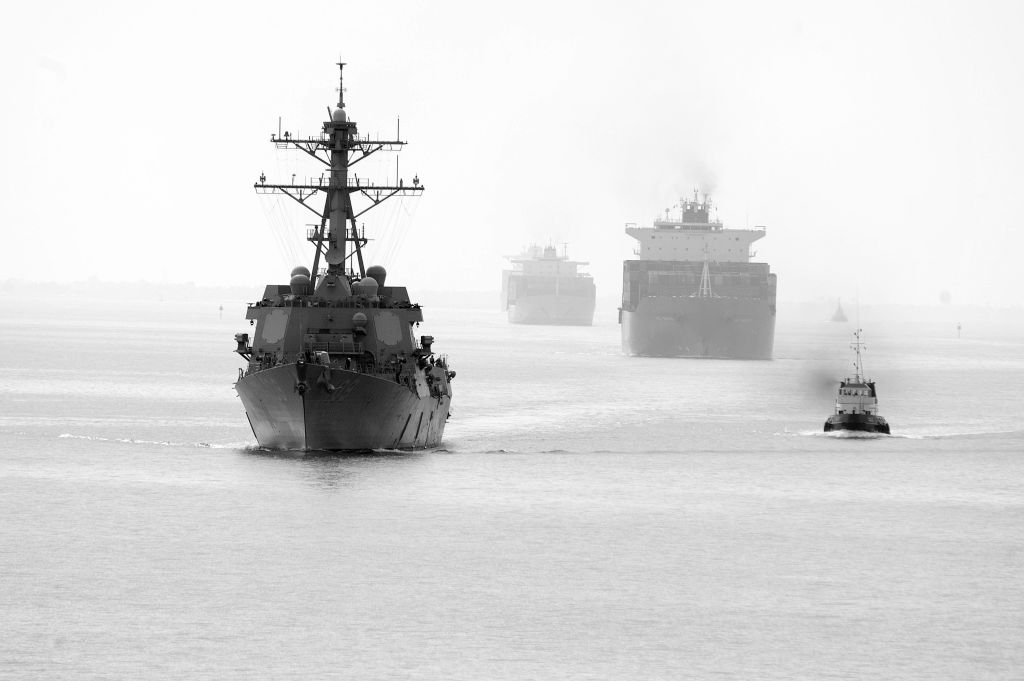
While the U.S. Navy Cyclone class patrol ships are a more cost appropriate platform to deter harassment and attacks by Iranian gunboats, neither they nor the smaller still Mark VI patrol boats have adequate Command, Control, Communications and Intelligence (C3I) bandwidth to lead a convoy, nor do they have adequate range to escort a convoy without refueling, in many cases. Both the Cyclone patrol ships and Mark VI patrol boats would clearly be part of a convoy protection system, but either a cruiser or destroyer would have to lead the convoy and Cyclone and Mark VI hulls may need to be refueled at sea during the convoy transit, which would add an additional complicating factor.
From an operational perspective, the mismatch is even more glaring than the financial considerations. Navy surface combatants in the Middle East have two operational commitments that dwarf all others.
First, protecting the carriers from anti-ship cruise missiles. While Navy carriers have some point defense systems, they are designed to operate in concert with cruisers and destroyers that push the defensive envelope out to well over a hundred miles. Second, to provide ballistic missile defense capabilities to U.S. and allied forces in the Middle East. If these extremely capable, extremely expensive Navy ships are playing sheepdog to a convoy of slow oil tankers, they can’t protect the carriers or provide ballistic missile defense.
The Cyclone patrol ships and Mark VI patrol boats are equally task saturated, albeit with different missions, more of a Special Operations Forces (SOF) support angle. Suffice to say, every Navy ship in the Central Command (CENTCOM) Area of Responsibility (AOR) has plenty of existing missions to attend other than escorting a convoy.
Bottom line, both commercial shipping owners/operators and modern navies hate the convoy system, and both hate it for the costs it imposes.
As a side note, at this point you might wonder, what about the Navy’s Littoral Combat Ships (LCS)? The LCS was conceived for exactly this type of mission, shallow water operations in a low-intensity conflict zone. LCS hulls are big enough to run an entire convoy route without refueling and have adequate C3I bandwidth to lead a convoy. At less than half the size of an AlreighBurke class destroyer, the LCS is just big enough to play mother goose to a convoy, without wasting a lot of excess capacity. Sounds perfect, right?
Well, the LCS would be a perfect fit for running convoys if it were deployable and fit for even low-intensity conflict zones. Regrettably, the LCS has earned its nickname of “Little Crappy Ship” by failing to meet many of its operational performance objectives or timelines. Forget deploying to a combat zone, or even a low-intensity conflict zone. The LCS fleet, and there is a fleet now, has barely been able to deploy to friendly foreign ports in recent years. Suffice to say the LCS is in this circumstance, as it has been since the first ship was commissioned in 2008, relatively irrelevant, except to the extensive damage it has done to the Navy budget and the burden it has placed on other ships that have to fill the gaps left by the nearly non-deployable LCS.

So What Happened To The Somali Piracy Problem?
In terms of deterring (no, not defeating—they are never defeated) Somali pirates, the resolution was provided by a combination of solutions that were implemented over a long timeline.
First, the U.S. and allied countries focused more on addressing security and governance issues on the landward side of the problem. While Somalia has been, at some level, a failed state for the better part of three decades, there are pockets of security and good governance. The U.S. and partners began working more closely with local institutions to deliver better security and governance, thus blunting some of the root causes of piracy.
Second, merchant ships began employing security contractors onboard. Pirates are fundamentally just thieves looking for an easy payday. The last thing pirates want is to try and seize a ship that is defended by professional security operatives.
Third, the U.S. and partner navies started Operation Ocean Shield that targeted pirate vessels, particularly “motherships” that were used to stage further attacks, for inspection and seizure.
Between improved security and governance in Somalia, security personnel on the commercial vessels, and the presence of warships operating in a coordinated fashion, the Somali piracy problem was gradually suppressed, if not solved nearly in full. By 2013, there were no successful seizures of large commercial ships by Somali pirates. To be clear, the problem has been suppressed, not eliminated, and could reappear in short order if conditions degrade, but for now, there is only a very limited threat to commercial shipping from Somali pirates.
Does Today’s Announcement Change Anything?
Today’s announcement by the British government that the RN would escort any British flagged vessels through the Strait of Hormuz contained two caveats. First, the escort is limited to the Strait. Second, the escort will only happen if the shipowner gives the RN “sufficient notice…of their passage.”
Regarding the location, the easiest place for Iran to harass, attack, or seize ships is in the Strait of Homruz, but it is hardly the only place. It’s just under 400 nautical miles from Bandar Abbas, Iran, located in the middle of the Strait, to Ras Tanura, Saudi Arabia. Iran could easily choose to forego operations in the Strait and attack elsewhere in the Persian Gulf. Additionally, Iran has access to the terrain in Yemen currently occupied by the Houthi rebels. That includes well over 100 nautical miles of coastline on the Red Sea.
Point being, the RN can provide security in the Strait of Hormuz. It can’t provide security for the entire region.
Regarding the timing, the RN can provide security in the Strait of Hormuz, if ship owners give sufficient notice. How much notice? Well, it seems inevitable that the notification will eventually flow from the RN to the shipping companies. In all likelihood, the RN will be forced to establish a schedule of Strait transits and commercial ships will have to adhere to that schedule if they want to be escorted through.
This will, of course, impose operational limitations on the limited in size and overtasked RN. If the RN is busy escorting commercial ships through the Strait of Hormuz, the RN is tied to the Strait and to the schedule of transits. And, of course, it will impose financial costs on the ship owners, because regardless of what the optimal scheduling is for any individual commercial ship, if it wants protection and escort through the Strait, it will have to adhere to the RN schedule of transits.
Ultimately, Iran has succeeded in imposing a substantial operational and opportunity cost on the RN, and a large financial cost on British flagged shipping.
Will The Iranians Stop Their Attacks?
The solution to Somali piracy was never a mystery, it was just difficult, expensive, and slow to implement. Even though Somali pirates were a ragtag collection of loosely affiliated criminal networks, it still took the United States the better part of a decade to come up with a coherent framework to deal with the problem. In contrast, Iran is the largest, most capable, wealthiest state sponsor of terror in the world with hundreds of thousands of loyal, disciplined, and well-trained followers at its disposal. Iran has been fighting a proxy civil war in Syria for the better part of a decade and in Yemen for half that time. They know how to plan for long-duration missions. If they want to keep attacking commercial shipping the Persian Gulf, they have the stamina to wait until the circumstances are ideal for their next hit.
Bottom line, there is no obvious offramp to further belligerent behavior by the Iranian regime. Neither the United States nor the EU is going to relieve sanctions on Iran, or its foreign partners, anytime soon, so further escalation, while not inevitable, is certainly likely. The European maritime mission that the United Kingdom is proposing will inevitably have to look something like a convoy in order to work. At this point, any commercial ships traveling solo into or out of the Strait of Hormuz is a viable target for the IRGCN.
With this in mind, the only thing that seems certain at this point is that some form of convoys—the ideal solution that is hated by both the navies that run them and shipping companies—will probably start operating in the near future. What exactly it will look like or how well it will be adhered to and last is anyone’s guess.
Contact the editor: Tyler@thedrive.com
